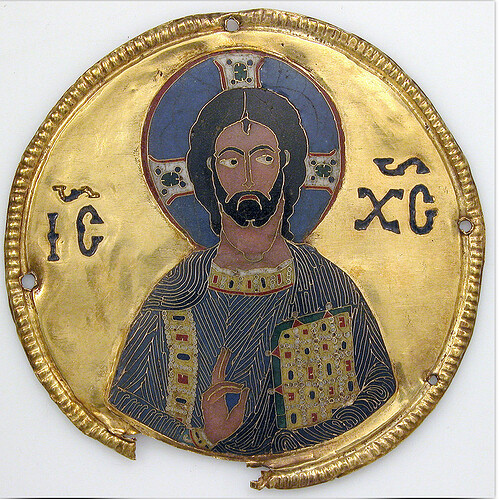Missed a bit! ![]()
You must realize that your first project is now on the list for extreme vetting. 
I thought that was happening with the puzzles! 
Anyway, @Xabbess loves weeding!  [quote=“Xabbess, post:1, topic:7658”]
[quote=“Xabbess, post:1, topic:7658”]
Some of you may think I’m crazy, but considering my personality, I actually really enjoy weeding…the more intricate, the better.
[/quote]
It’s very possible they were missed…OR also very likely that they were inadvertently touched with the adhesive and got a coating of powder along with everything else. Everything is so small and close together, that has happened on occasion. A finer tip on the adhesive pen would help with that.
Nice job on the lips and eyes, by the way…
Ha ha! You’re having way too much fun with this! Good job!
I love this! Have you ever seen those old Byzantine cloisonne medalions? This reminds me a lot of those.
Hahaha! Don’t mess with a talented artist! Now you need to engrave them all, @Xabbess. I think it would make a cool collection.
No, I hadn’t. Just looked them up. Like this?
They are amazing. Much more though, than what I just made…but still, inspiring.
Wow !
This may be a question Dan can answer. Could the laser power be controlled low enough to melt the embossing powder with burning or volatilization? Then the powder could be spread over a surface and only melted where desired and then shake off the excess. This could potentially be much faster than using the glue pen. May be hard to get a thin enough layer. This open up another possibility of powder coating powders to get localized coatings.
There’s a thread over here where there were a few attempts made to selectively melt powder with lasers. It sorta worked.
So cool. I love that you were able to get such detail out of the embossing powder! I think I’m gonna just go buy some and play with it before I finally get my 'forge.
Yes…do! That’s what I was doing before I got my PRU. That, and foils. Couldn’t help but want to integrate and experiment with some of that when I finally got a Glowforge.
I know you’re busy learning the machine right now, but seriously, once you get proficient with it, you need to do some little demos or tutes on using the foils - I still want to try that one of these days.
(Too many cool things to do, never enough time.)
I am certainly not an expert, but it seems to me that the fan/air assist would blow the excess powder all over the place inside the laser before it could accomplish anything. And I don’t know about this, but if a laser beam gives off any extraneous heat when working, it could possibly be hot enough to melt the extra powder in addition to where you really wanted it to melt.
You and me, both. I’m probably going to try some foil stuff again, in addition to the embossing powders. The regular way of adhering foil is to run it through a laminator, but since one can’t do that with a piece of wood or acrylic, I’ve used an adhesive that is more glue-like rather than like a marking pen, then using a heat gun and a brayer instead of the laminator. The problem has been getting that glue nice and smooth. Otherwise the foil looks all lumpy.
Ah…you gotta love ‘the curve’…
![]()
Slightly off topic here, but relates to coloring projects. Has anyone tried filling engraves with acrylic nail polish? There are literally thousands (millions?) of colors out there.
I don’t know if it would mar the flat part of an acrylic piece if using the fill and wipe off excess method. Also, it may peel up if painting over a masked area, allowing to dry and peeling the mask. Anyone up for a try of this material?
Already done it to a certain extent with the Gallery Glass - the effect was not what I was looking for.
There is a certain rough texture to the bed of the engrave that shows through the transparent glass paint.
An opaque nail polish would certainly work, but you lose that translucent quality I was shooting for.
I can tell you, the thing that gave surprisingly good results (total surprise) was mixing PearlEx powder into some plain old wood glue. I loved that effect - when it dried it created a slightly domed raised colored area that completely changed the look of the wood. (I showed it on that Flight of the Phoenix box).
Just don’t drop it. 
Here’s a heat adhesive sheet material made of polyester so it should be laser-able. Even though it is called vinyl, it has no PVC components. It sounds like this could be a solution to getting an even coat for foiling. I don’t know if the Glowforge could be dialed down enough to cut just the adhesive portion and leave the backing. Even if you could, it may just melt back together before you could weed out the unwanted areas. It would work for non complex graphics where you could cut completely through it and still handle the image.
You cut the graphic in reverse, then flip it over to iron on the adhesive (with the carrier protecting the iron). After adhered to the surface, you remove the backing and cover the graphic with your foil, then press again to adhere the foil to the adhesive.
@Xabbess, if you’d like a small sample to test, PM me and I’ll send a little piece out to you to experiment with.

